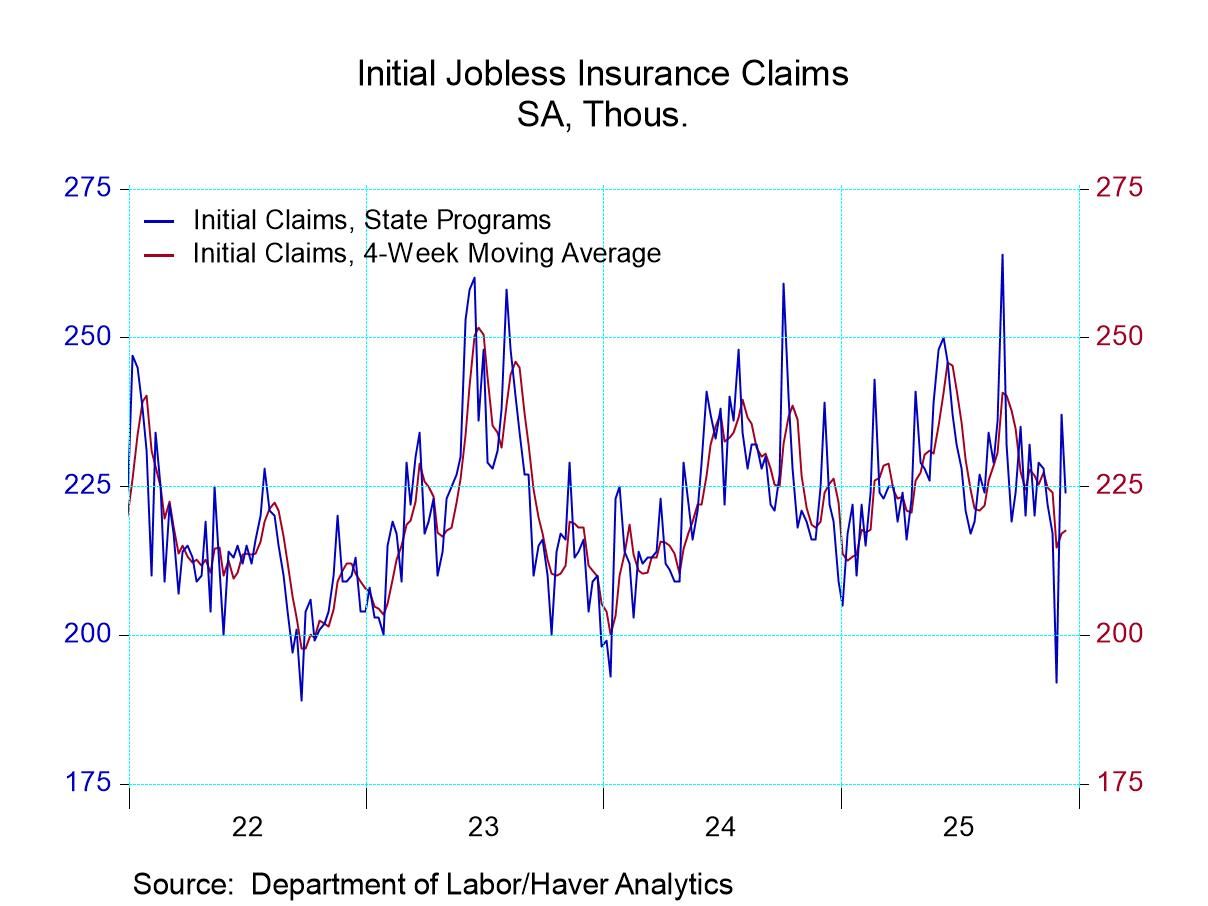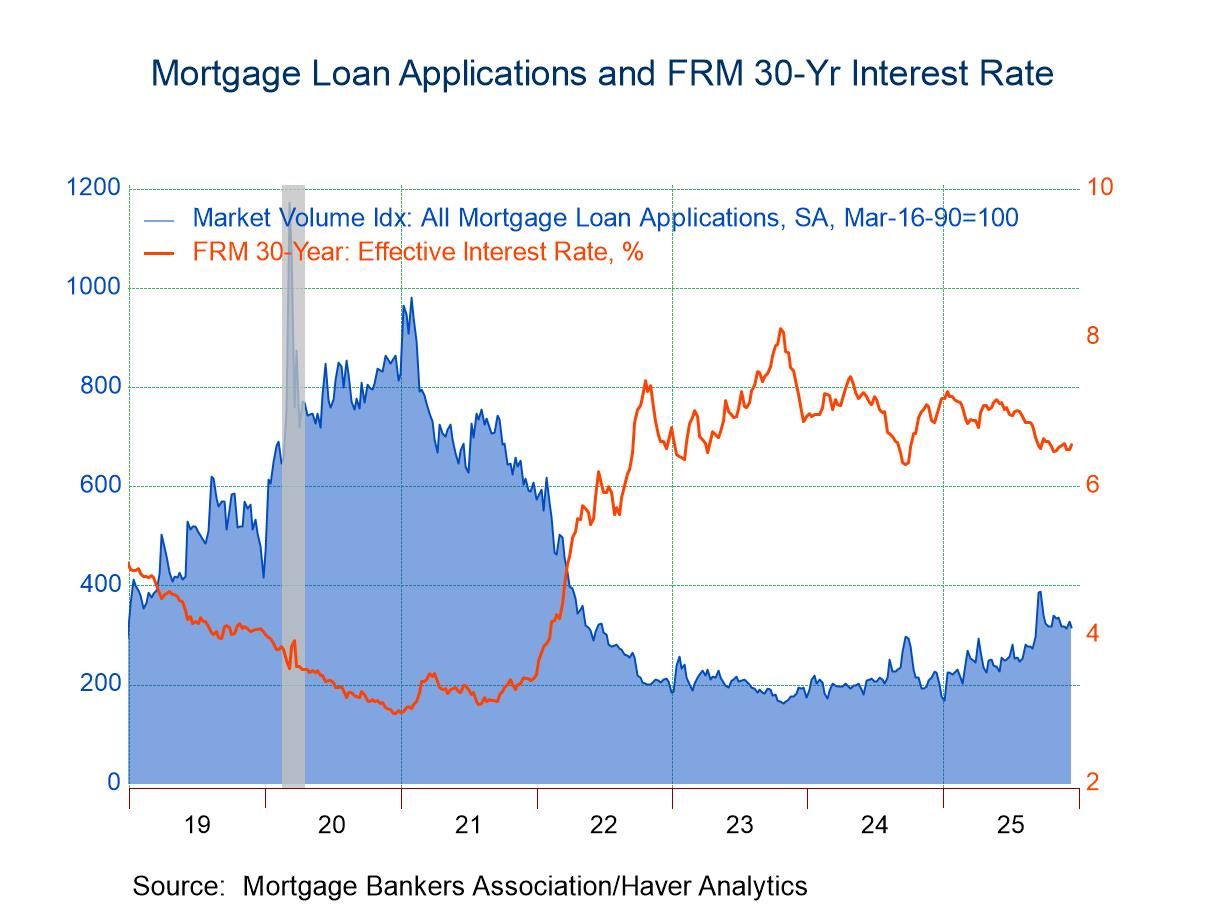U.S. FHFA House Prices Increase in August, the First M/M Gain Since March
Summary
- FHFA HPI +0.4% m/m (+2.3% y/y) in August vs. -0.04% m/m (+2.4% y/y) in July.
- House prices up m/m in seven of nine census divisions but down in Pacific (-0.8%) and West South Central (-0.2%).
- House prices up y/y in eight of the nine regions, w/ the highest rate in Middle Atlantic (+6.3%) and a drop in Pacific (-0.6%).
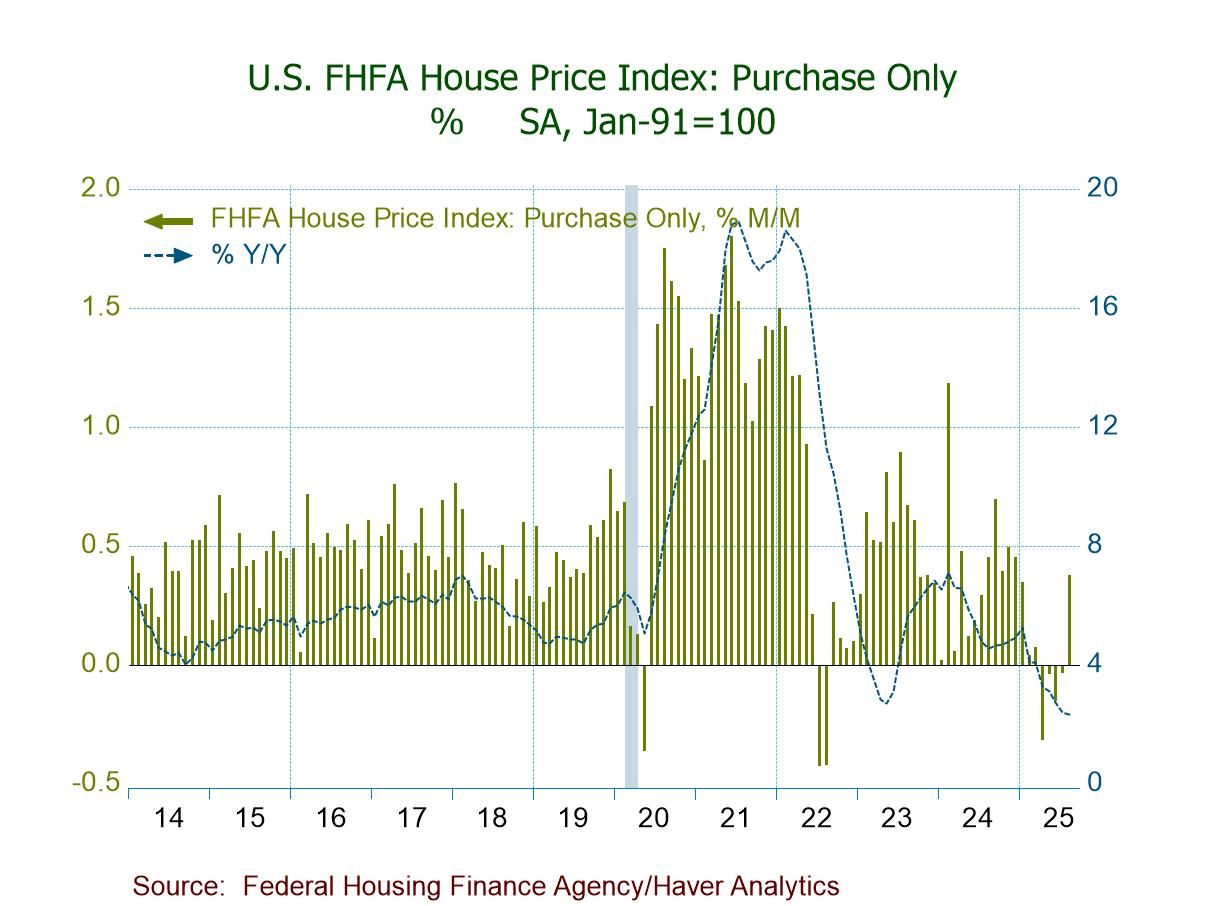
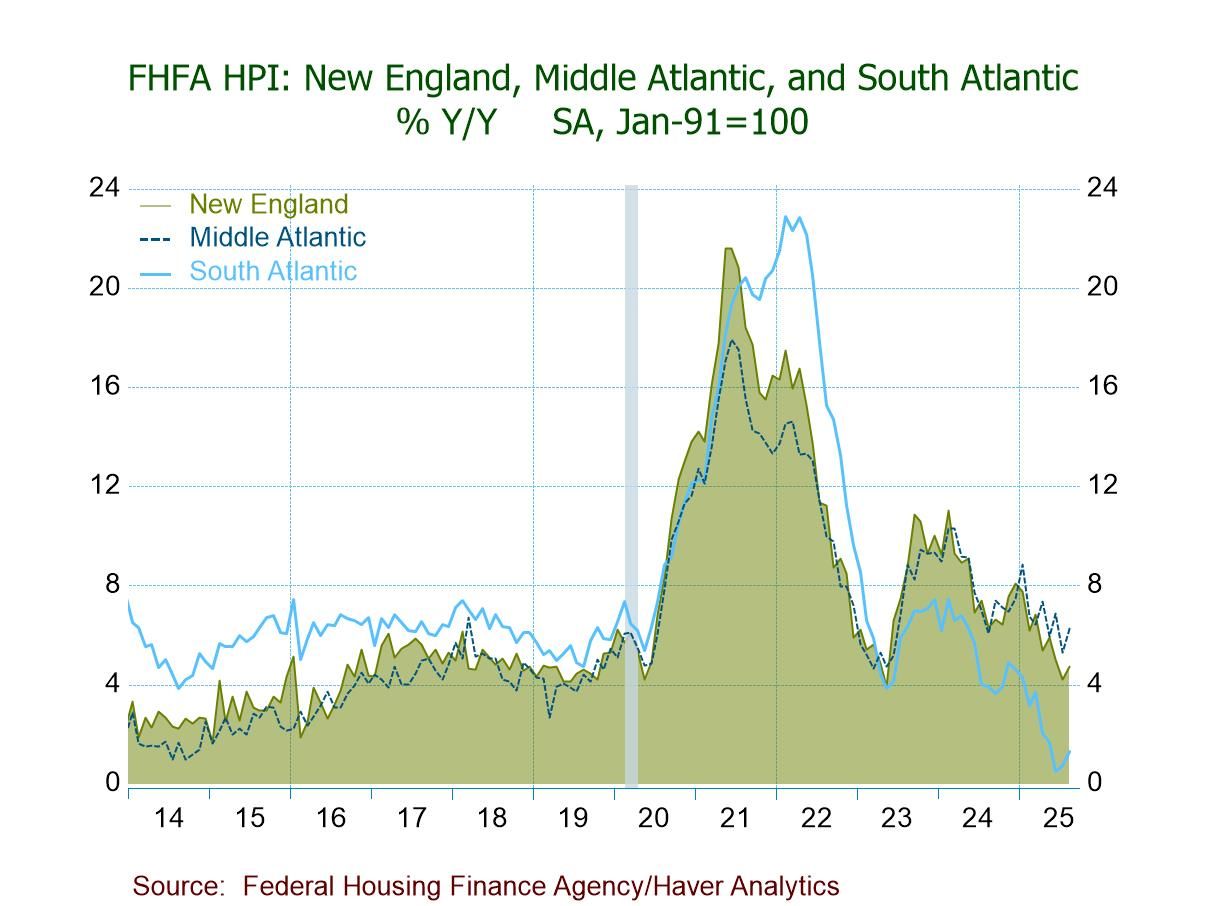
U.S. house prices were up 0.4% m/m in August after virtually unchanged in July (-0.1% initially) and a 0.2% decline in June (unrevised), according to the Federal Housing Finance Agency (FHFA) House Price Index. The August reading was the first m/m rise since a 0.1% uptick in March. The August HPI at 435.26 was the highest level in five months and 13.0% above a low of 385.24 in August 2022. The year-on-year rate of increase eased to 2.3% in August from 2.4% in July, marking the lowest y/y rate since a 1.9% gain in April 2012; it was also lower than 4.6% in August 2024 and well below a high of 18.6% in February 2022.
House prices rose m/m in August (vs. July) in seven of the nine census divisions. These included Middle Atlantic (1.2% vs. -0.9%), Mountain (0.7% vs. -0.1%), New England (0.7% vs. 0.1%), South Atlantic (0.7% vs. -0.1%), East North Central (0.6% vs. 0.3%), East South Central (0.5% vs. -0.5%), and West North Central (0.3% vs. -0.1%). In contrast, house prices fell m/m in two census divisions in August (vs. July): Pacific (-0.8% vs. +0.4%) and West South Central (-0.2% vs. +0.1%).
Year-on-year house prices continued to gain in August except in the Pacific region. The pace of increase accelerated y/y in August (vs. July) in four of the nine census divisions. These were Middle Atlantic (6.3% vs. 5.3%), East North Central (4.7% vs. 4.3%), New England (4.7% vs. 4.2%), and South Atlantic (1.3% vs. 0.7%). Meanwhile, house price growth decelerated y/y in August (vs. July) in the following regions: West South Central (0.7% vs. 1.6%), East South Central (2.3% vs. 2.6%), and West North Central (3.2% vs. 4.1%). House price growth in the Mountain region held steady at 1.2% y/y. To the downside, the Pacific region was the only area with a y/y decline in August, falling 0.6%—its first y/y drop since June 2023—after a 0.4% increase in July.
The FHFA house price index is a weighted purchase-only index that measures average price changes in repeat sales of the same property. An associated quarterly index includes refinancing the same kind of properties. The indexes are based on transactions involving conforming conventional mortgages purchased or securitized by Fannie Mae or Freddie Mac. Only mortgage transactions on single-family properties are included.
The FHFA data are available in Haver’s USECON database.
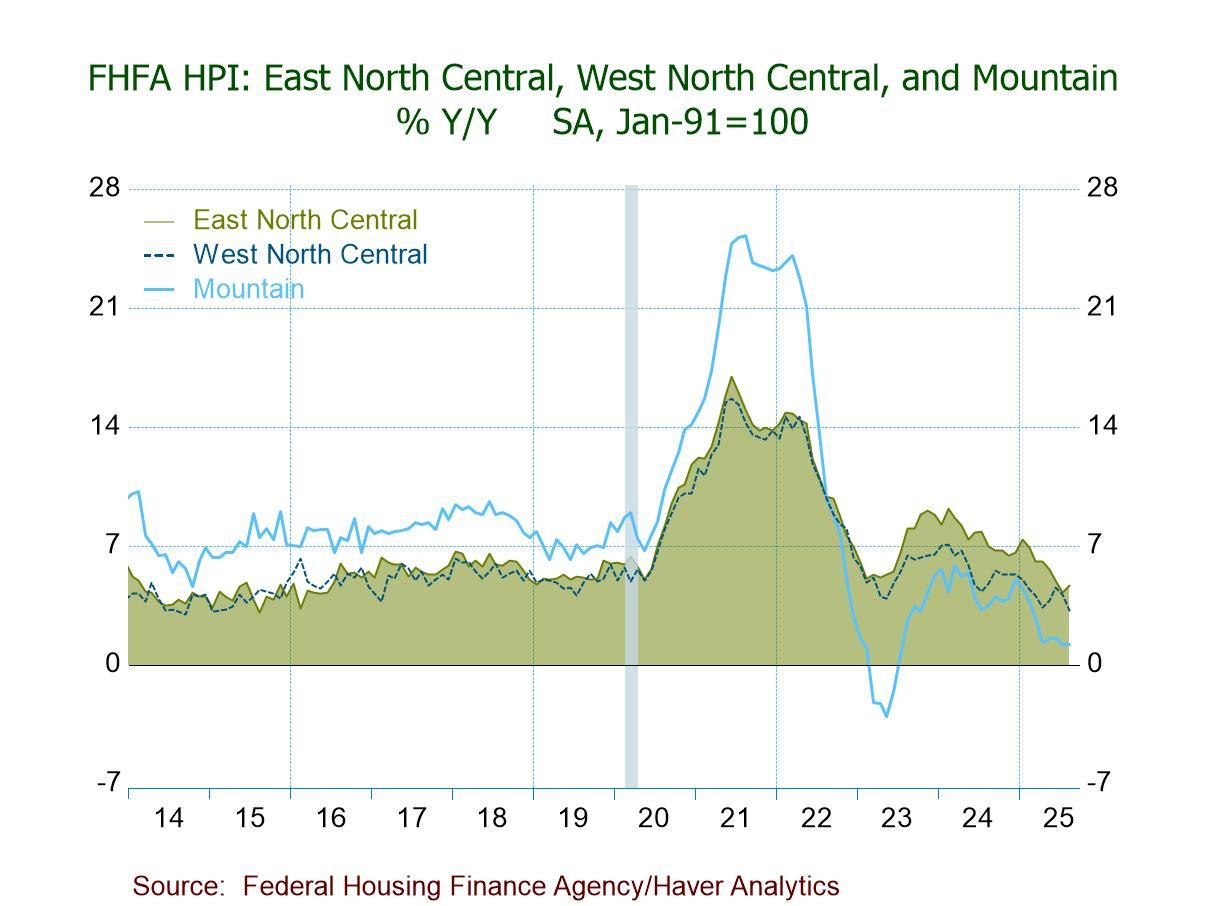
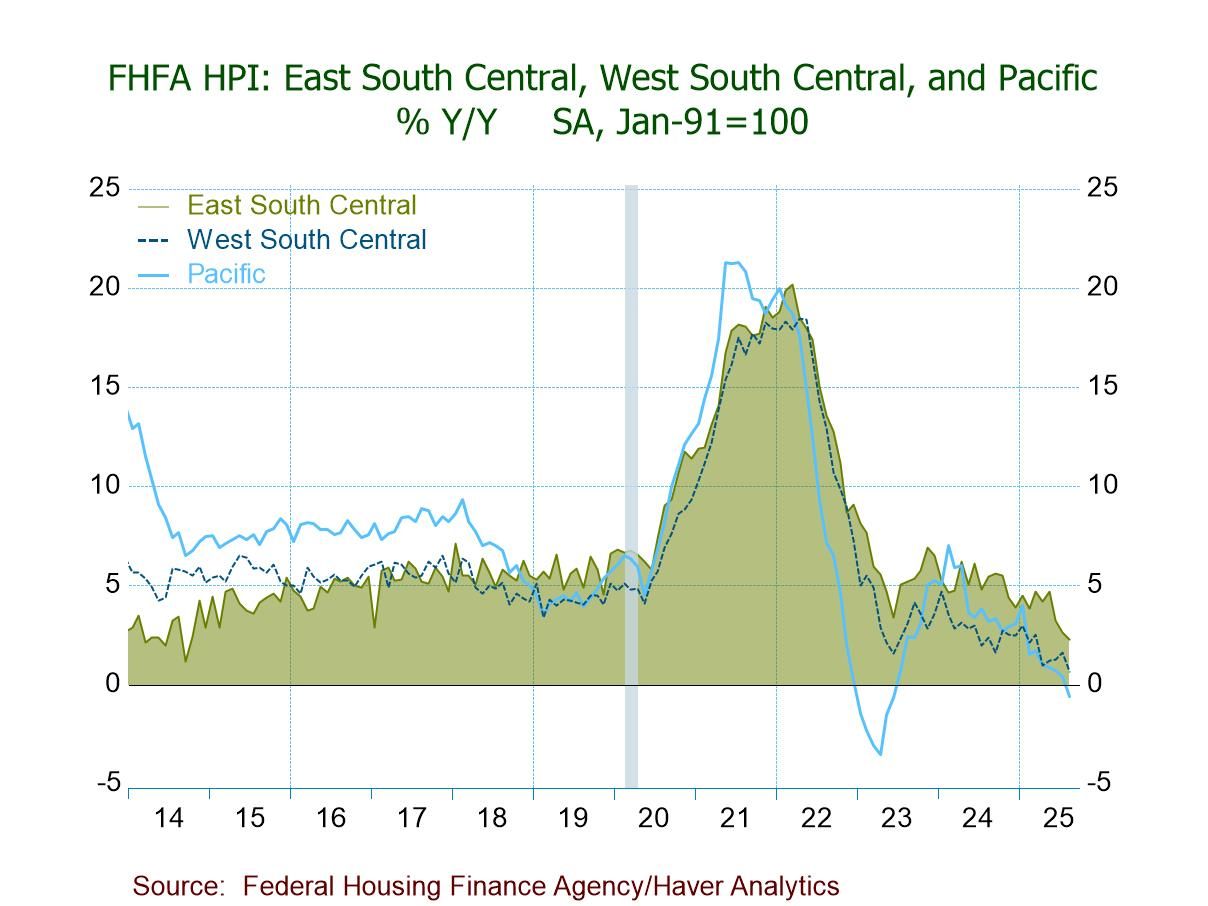
Winnie Tapasanun
AuthorMore in Author Profile »Winnie Tapasanun has been working for Haver Analytics since 2013. She has 20+ years of working in the financial services industry. As Vice President and Economic Analyst at Globicus International, Inc., a New York-based company specializing in macroeconomics and financial markets, Winnie oversaw the company’s business operations, managed financial and economic data, and wrote daily reports on macroeconomics and financial markets. Prior to working at Globicus, she was Investment Promotion Officer at the New York Office of the Thailand Board of Investment (BOI) where she wrote monthly reports on the U.S. economic outlook, wrote reports on the outlook of key U.S. industries, and assisted investors on doing business and investment in Thailand. Prior to joining the BOI, she was Adjunct Professor teaching International Political Economy/International Relations at the City College of New York. Prior to her teaching experience at the CCNY, Winnie successfully completed internships at the United Nations. Winnie holds an MA Degree from Long Island University, New York. She also did graduate studies at Columbia University in the City of New York and doctoral requirements at the Graduate Center of the City University of New York. Her areas of specialization are international political economy, macroeconomics, financial markets, political economy, international relations, and business development/business strategy. Her regional specialization includes, but not limited to, Southeast Asia and East Asia. Winnie is bilingual in English and Thai with competency in French. She loves to travel (~30 countries) to better understand each country’s unique economy, fascinating culture and people as well as the global economy as a whole.



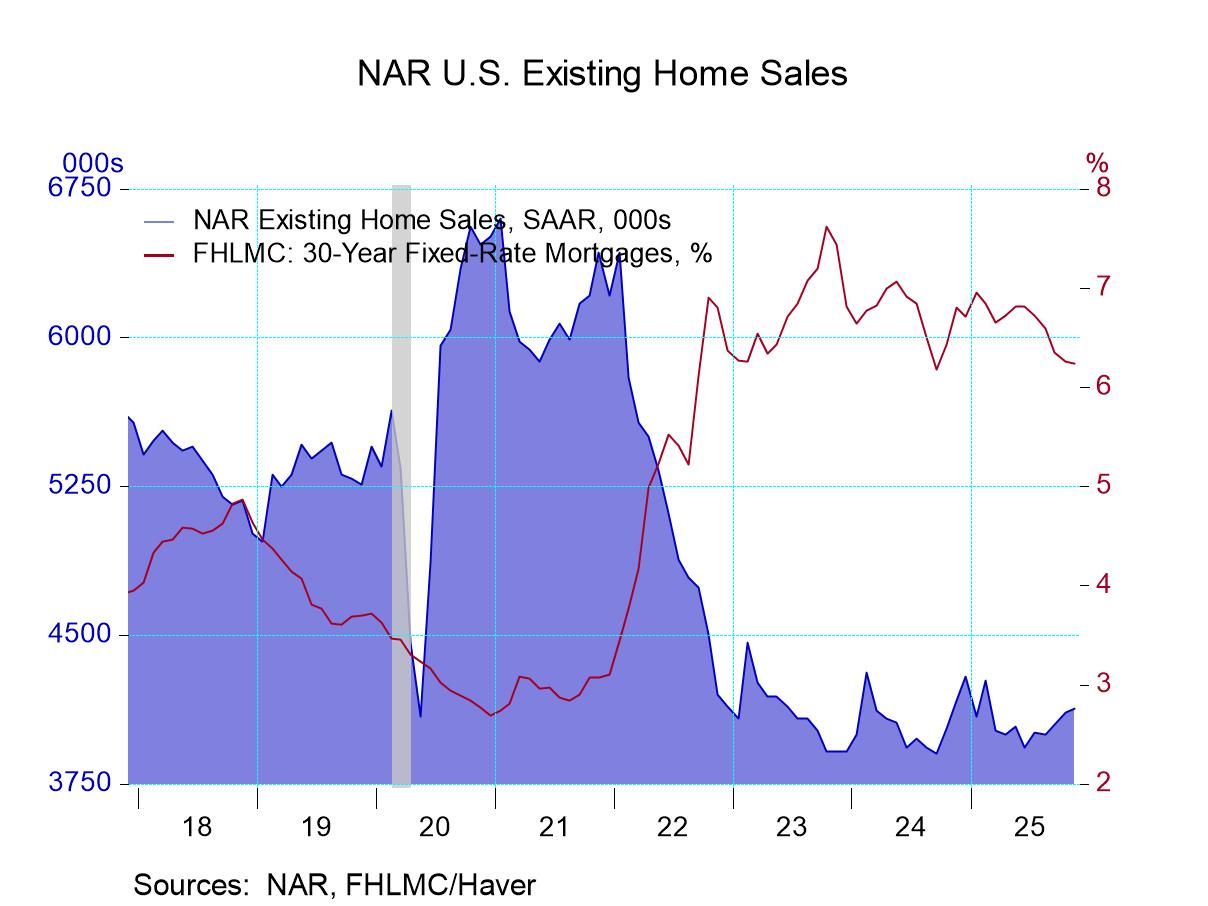
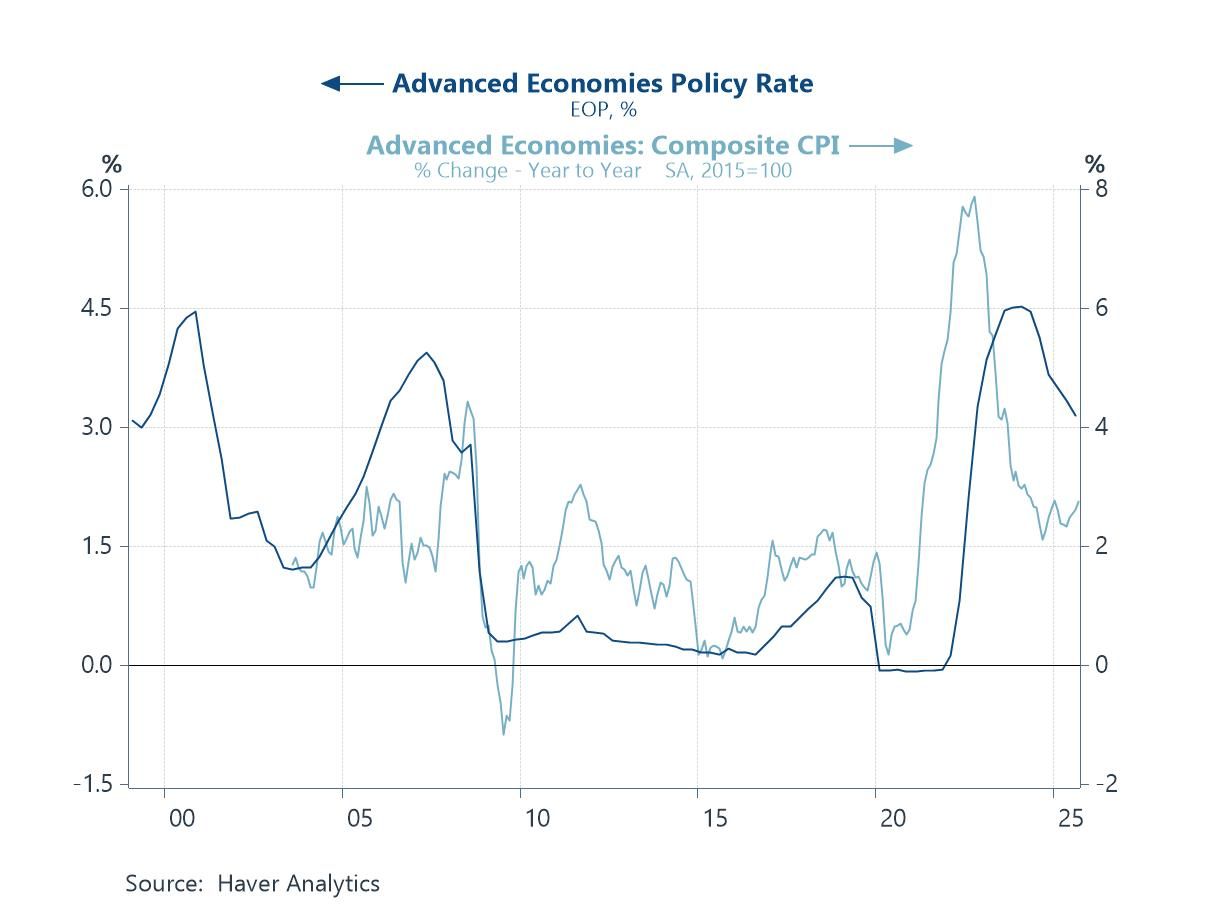
 Global
Global